After a week or two in Mexico City, you notice something unique about the city. It’s not the colonial architecture, which is monumental, but still similar to what you can see in Mérida or Guanajuato. It’s not the Aztec temples, which are spectacular, but the Maya temples of Yucatán already prepared you for the splendor of Mesoamerica. Rather it’s the number of seemingly mundane public and government buildings covered with intricate works of art.
What on Earth could be interesting in a federal government building of the Secretaría de Comunicaciones y Transportes? And yet, as we were passing it by in a taxi, I had to tell the driver to stop, and ran to take a closer look.
Aztec gods, warriors dressed as jaguars, monks, horsemen, airplanes, oil refineries. I couldn’t tell most of the symbolism, but clearly it was some sort of retelling of Mexico’s history. I was standing with my mouth open.
This mix of Soviet-style social realism with Mexican indigenous elements is unlike anything I’ve ever seen. I was hooked. I had to find out more.
Contents
José Vasconcelos
The first time I heard the name of José Vasconcelos was in Pata Negra, an old library turned pub in the historical center of Mexico City. The six of us, three Mexicans and three foreigners were drinking beer and discussing Mexican history.
Martin, a good-natured bearded intellectual in a black a cap, going for a Marxist revolutionary look, was at the center of the conversation. He was the one who organized the weekly meetup of locals working in city’s cultural institutions and knowledge-thirsty travelers. His post in Couchsurfing group promised a free beer to anyone whose question he and his friends couldn’t answer. And so us foreigners were doing our best. A Brazilian guy was asking about artificial islands built by the Aztec. I wanted to know what all that public art meant, and how did it come to be. That’s when Martin mentioned José Vasconcelos.
One of the most important public intellectuals of post-revolutionary Mexico, Vasconcelos played a decisive role in the promotion of muralism. He believed in the importance of secular, public education, and saw in public art works a teaching medium. Just as monks and missionaries centuries earlier used art to tell biblical stories to convert indigenous Mexicans, this time art was to be used in the promotion of socialism and the creation of a new Mexican identity. The muralists David Siqueiros, Diego Rivera and José Orozco worked together under Vasconcelos, who supported the muralist movement by commissioning murals for prominent buildings in Mexico City.
UNAM Central Library
Growing up as a child in the Soviet Union of the 80’s, my only conception of Mexico came from a small collection of stories about the injustices suffered by the indigenous people and a black-and-white photo of a building. A building unlike any other. Its “owl eyes” channeled a primordial horror which for years transfixed my imagination.
Expectedly, the campus is a sanctuary of lefties. As you browse between second-hand book lots with volumes about Marxism and the revolution of the proletariat, an unmistakable smell of weed follows you around.
In front of the library, the building of Rectoria boasts its own set of murals. The artist behind them is David Alfaro Siqueiros. A swore Stalinist, he participated in an unsuccessful attempt to assassinate Leon Trotsky in 1940. After doing jail time, he returned to muralism, developing a recognizable painting-sculpture style.
His “The Dates of Mexico’s History” recounts Mexico’s historical milestones: 1520 (arrival of the Spanish), 1810 (Mexican Independence), 1857 (Constitution), 1910 (Mexican Revolution).

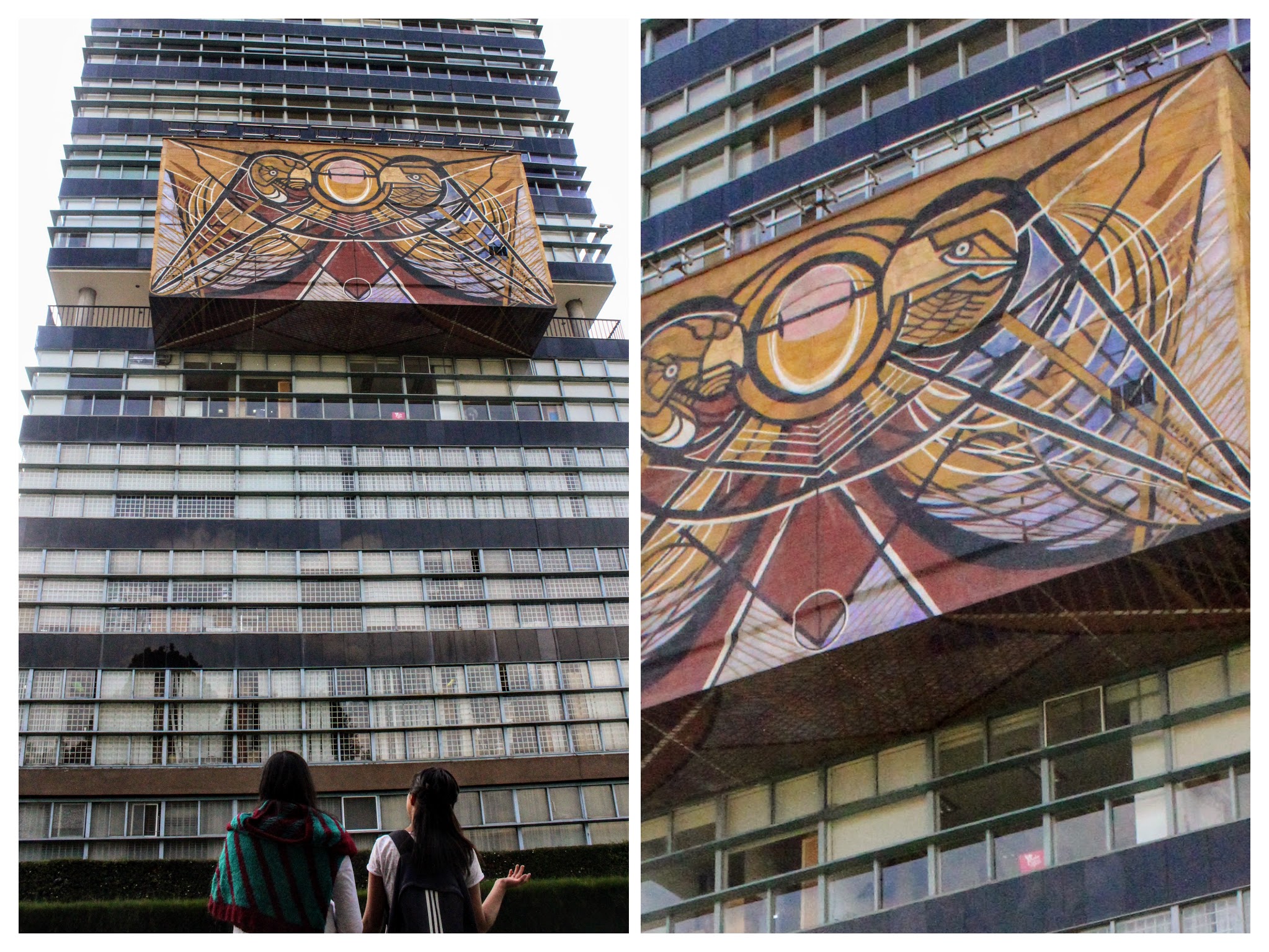
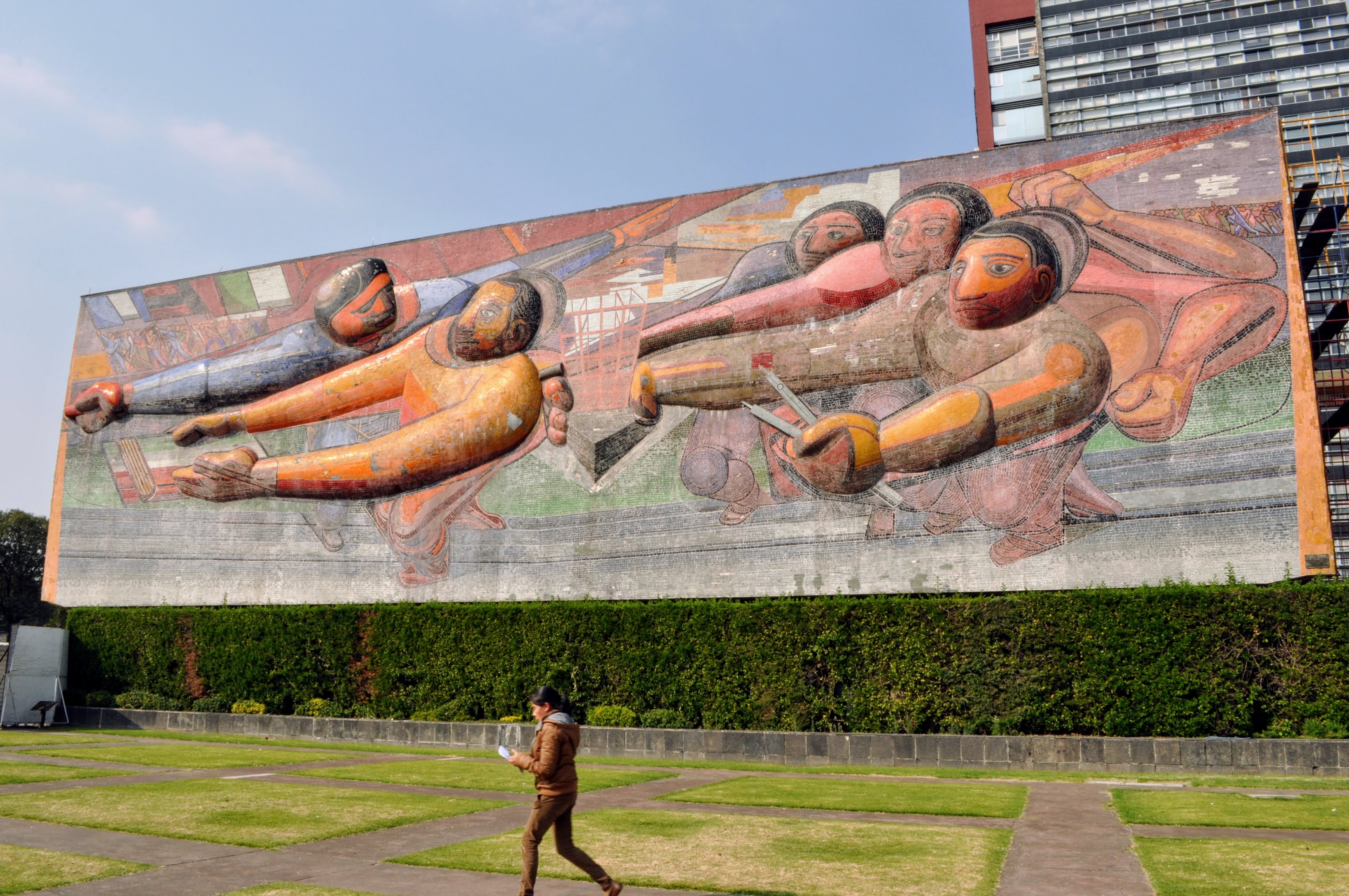
Secretaría de Educación Pública
The building on Avenida República de Argentina in the historical center of Mexico City doesn’t look like much from the outside. Guards at the entrance ask you for a photo ID, bureaucrats inside hurry between offices, cleaning stuff scrubs the floors. And you, the only tourist here, stand marveling at the scope of what you see. Two yards, three floors each with walls completely covered with mural paintings from top to bottom. Diego Rivera started painting in 1923, and finished in 1928. As the first minister of public education, José Vasconcelos commissioned the work.
Each courtyard is thematically distinct. The one on the east end deals with labor, industry and agriculture.

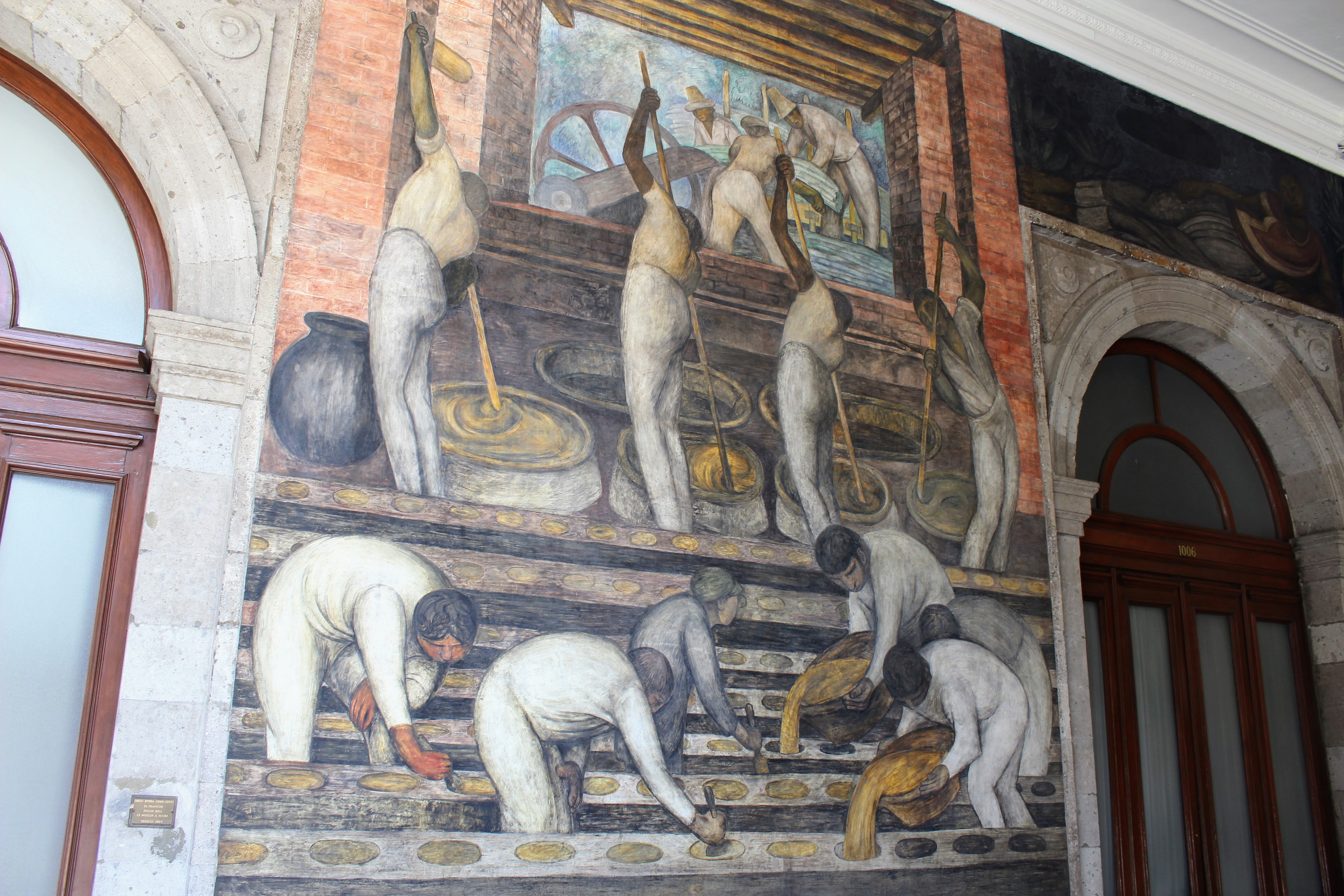

The interior courtyard depicts traditions and festivals.

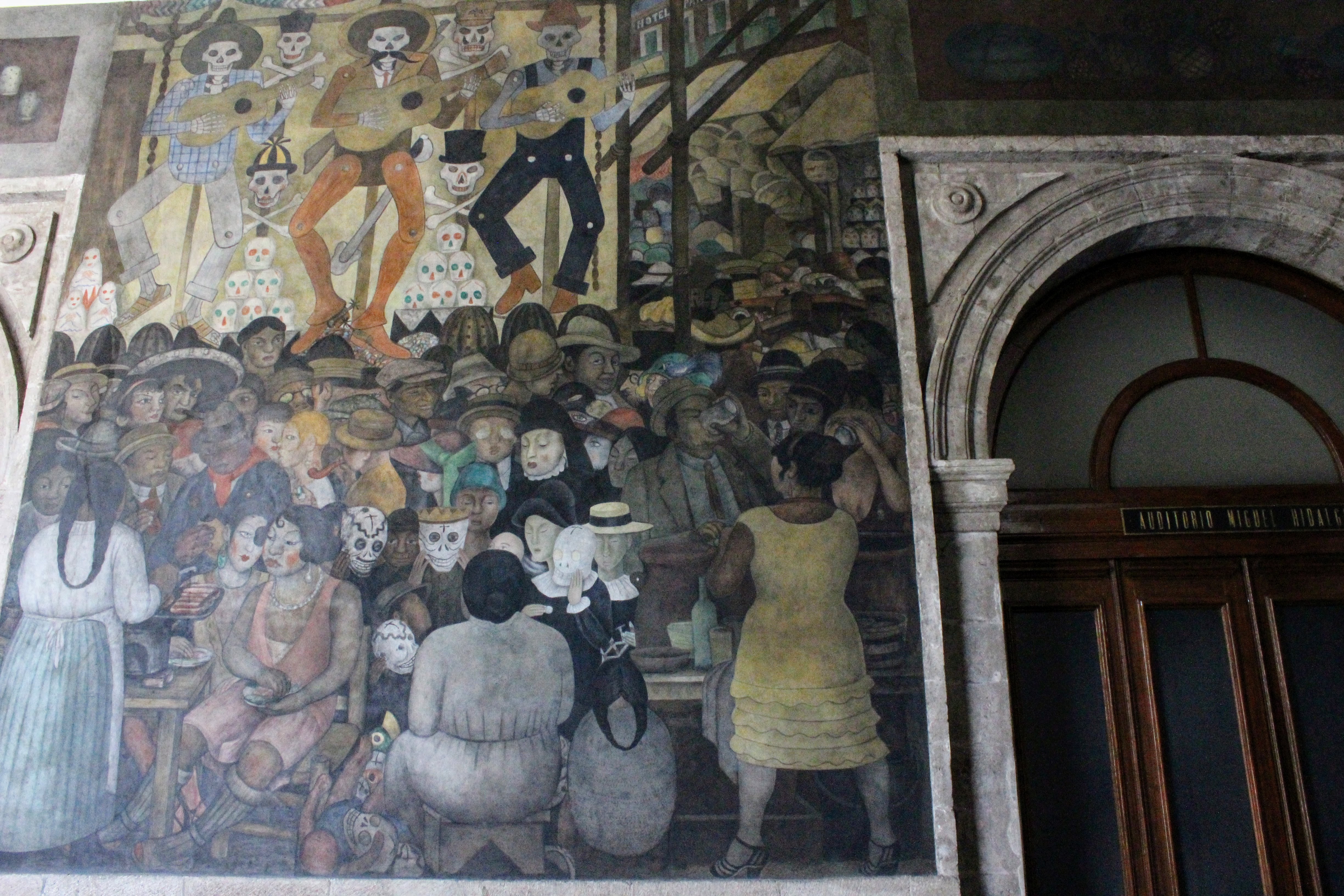

The top level has a series of murals on the excesses of the capitalist class and the inevitable proletarian and agrarian revolution. Underneath, a continuous red banner is emblazoned with a Mexican folk song.
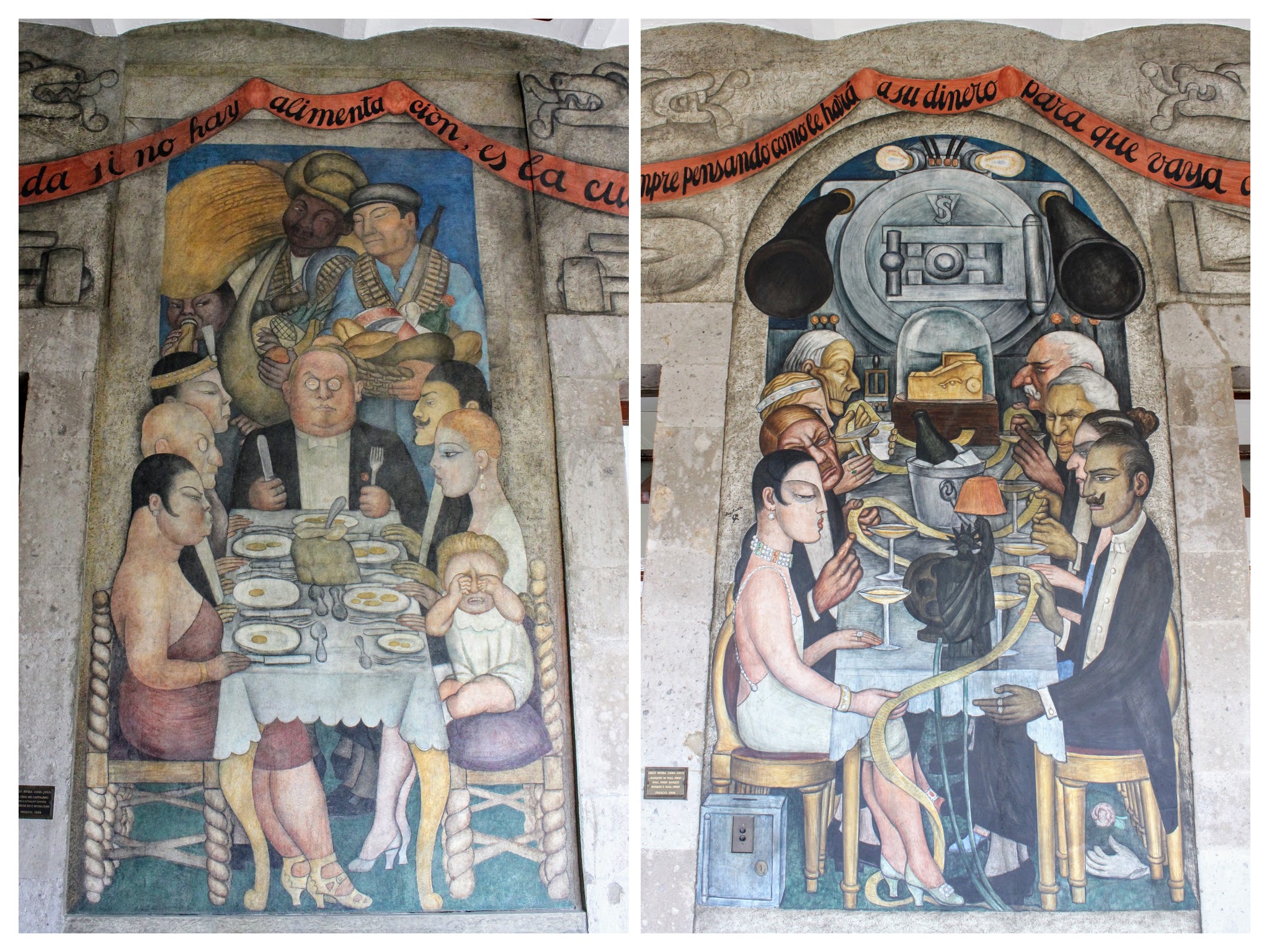
Note the female figure in a red shirt in the center of the last painting. She bears more than a passing resemblance to Frida Kahlo.
While Soviet art was hostile towards religion, Mexican muralism is different. Images of angels, Jesus and Mary with indigenous features, common people holding hammers and sickles. Marxism, Catholicism and indigenous traditions live harmoniously here.
Tlatelolco Murals
Who said only government building make for a good mural backdrop? The residential blocks in Tlatelolco prove otherwise. We got here one Saturday morning on a different mission – to see the ruins of Tlatelolco, the Aztec sister city of Tenochtitlan, whose ruins we explored earlier in Centro Histórico. But as we were making our way from the metro station through a row of gruesome residential complexes, something else caught our attention.
That something – a magnificent 10-story high mural. The favorite muralist themes are all here: the suffering of the past and the present, the breaking of chains and the birth of a new man. Later I found out it’s called “Tlatelolco, Roots and Expression of México”, painted by a Mexican muralist Nicandro Puente in the late 90’s.

Puente painted two additional murals on the nearby buildings. The second one (on the right) is called “Homage to Woman”.
The third mural is his most ambitious. Called “Tlatelolco 1985 – Earthquake and Resurrection” it evokes the memory of the destruction the 1985 earthquake sowed in the neighborhood. Taking an entire back side of a building, it is simply breathtaking.
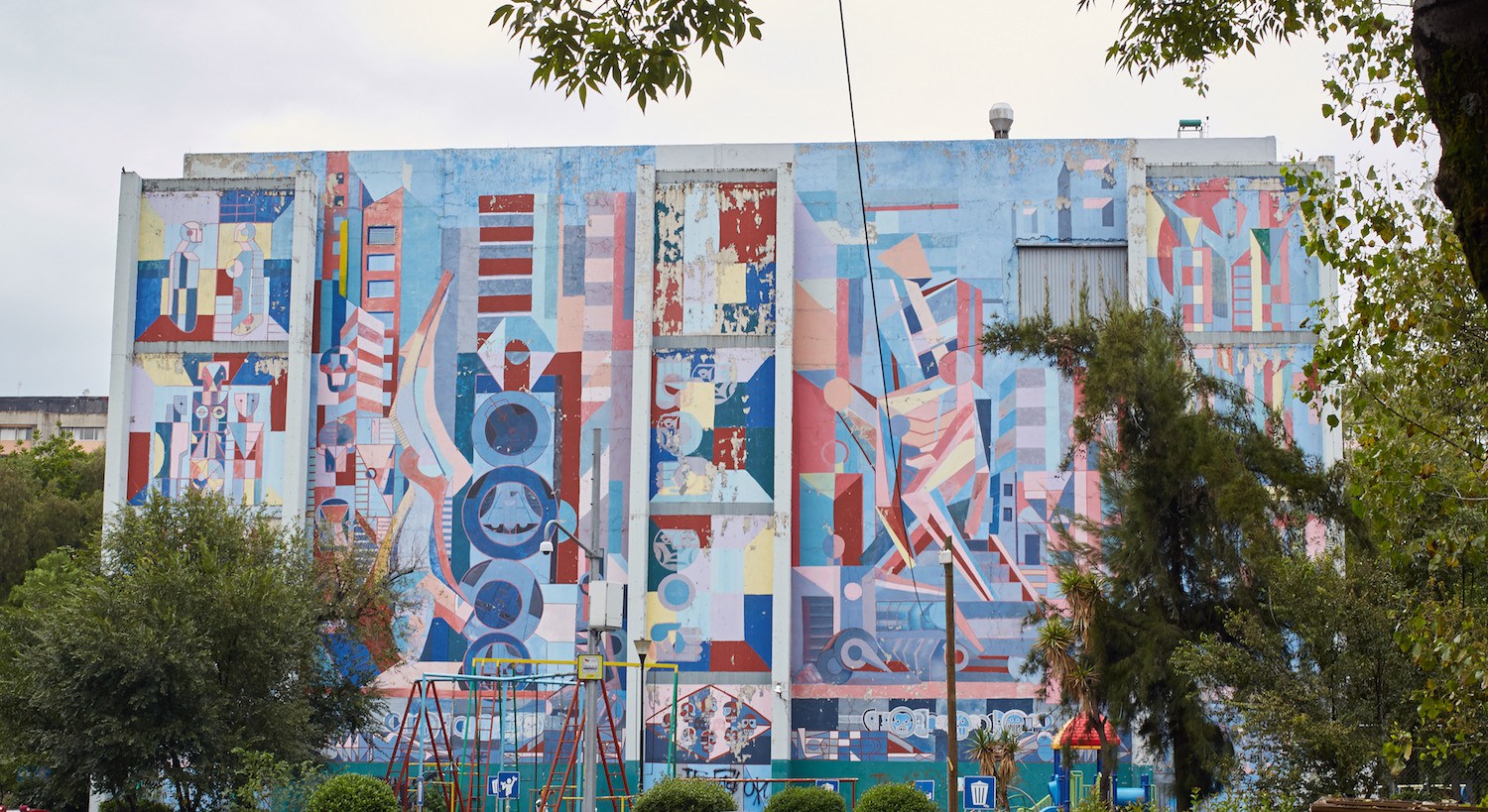
Palacio de Bellas Artes
Back in Centro Historico, Palacio de Bellas Artes houses some of the finest murals in the city.
From the ground floor to the uppermost floor, the walls are dominated by expansive muralist works.
Rivera’s “Man at the Crossroads” (1933) has an interesting history. It was initially slated to be installed in the lobby of 30 Rockefeller Plaza in New York, ordered by the Rockefeller family who admired Rivera’s work. But then he decided to include Lenin in the composition, and refused to remove him despite repeated requests. Only black-and-white photographs remain of the original incomplete mural, taken when Rivera was forced to stop working on it. Using the photographs, Rivera repainted the composition in Mexico. With Lenin, of course.

In “Carnival of Mexican Life” (1936) Rivera turns to his favorite subject of Mexican festivals. His other famous carnival-themed work “Dream of a Sunday Afternoon in the Alameda Central” is housed in his museum, a hundred meters from Bellas Artes. I wrote about it in a previous post.

“México for Democracy and Independence” was painted by David Siqueiros in 1944 to commemorate an anniversary of the Mexican revolution.

 “Humanity is Released From Misery”, Jorge González Camarena
“Humanity is Released From Misery”, Jorge González Camarena
Orozco, whose powerful works we first saw in Guadalajara, stays true to his brutalism, with fire, machinery, murder and nude bodies all abound.

Polyforum Siqueiros
If Mexico City is the Mecca of Mexican muralism, then Polyforum Siqueiros is its black stone. A decagon-shaped construction, it was built in the 70’s to host a large mural work by David Alfaro Siqueiros.
Outside, it features a twelve-faced sculptural mural painting, with each panel representing a different concept.
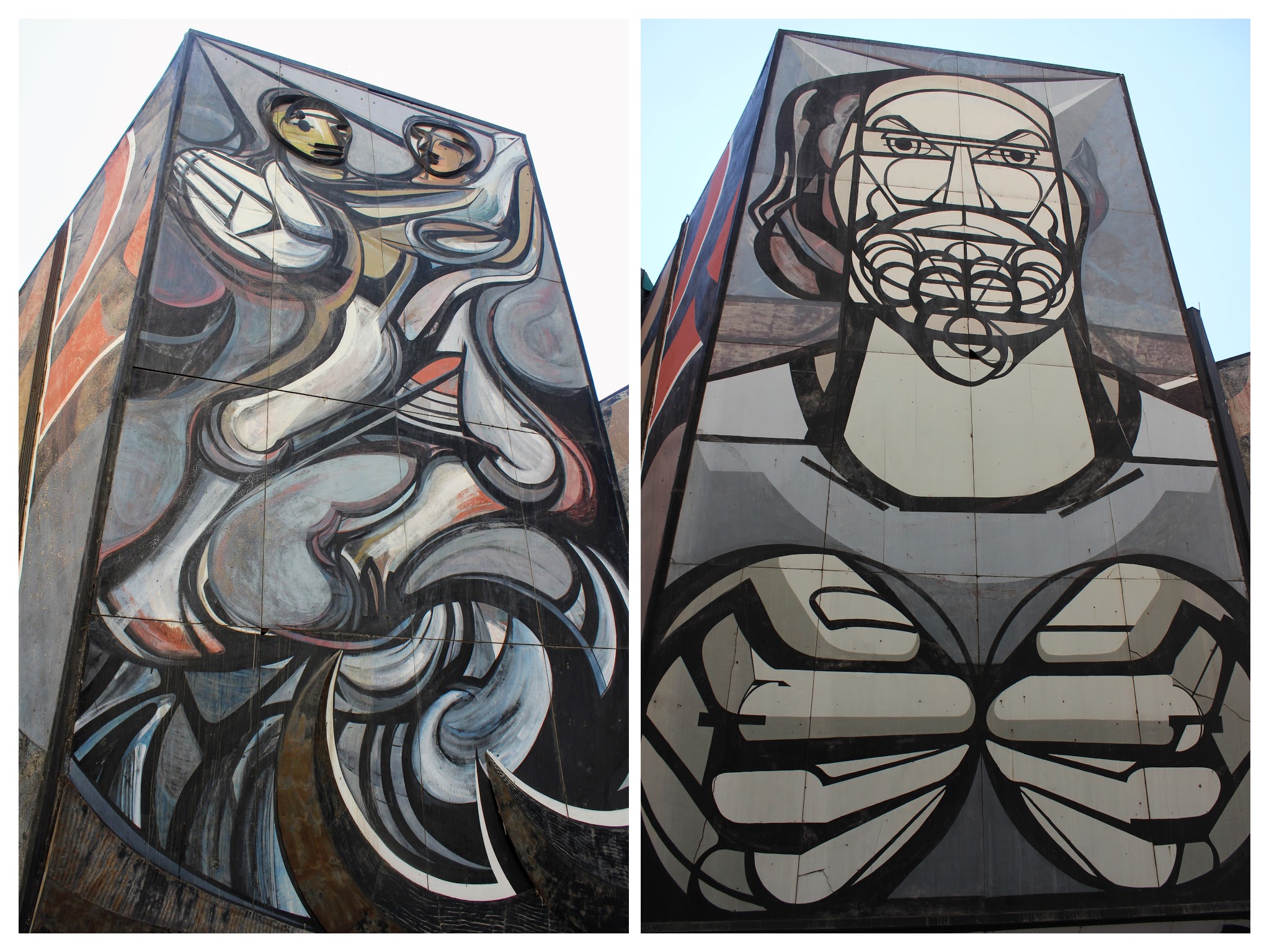

An outside wall celebrates 50 years anniversary of Mexican muralism (1921-1971) with portraits of its leaders.

Inside, the construction imagined as a multi-purpose space, looks exactly as you would expect from a 70’s futuristic project.
The main space of the forum is a large oval hall that houses Siqueiros’ magnum opus called La Marcha de la Humanidad (The March of Humanity).
The March of Humanity is a grand metaphor about the struggles of men and women throughout history and the search for a better society for all.
The interior is divided into four main thematic areas: “The March of Humanity towards the Bourgeois Democratic Revolution”, “The March of Humanity towards the Revolution of the Future”, “Peace, Culture and Harmony” and “Science and Technology”.
When the lights go out, and the stage starts rotating, you realize you are in for a ride. Yes, of course a 70’s project can’t do without a light and sound show. But the initial skepticism passes away quickly. After all, we are the stars of this show. We know too well what the red stands for, what the sculls stand for. The march ends with a lump in your throat.
Still under the spell of what you just experienced, you get to the nearby Burger King. And you discover that the hands reaching out to you weren’t bringing peace or justice. They were offering burger with a coke. So typically human.
If the goal of art is to stir emotions, then Mexican muralism reaches this goal triumphantly. I’ve never been so moved by visual art as I was during those months in Mexico. You begin with an awe of the work’s scope, get swept by its political narrative, and finally give in to its emotional impact. If you need another reason to stay longer in Mexico City, I can’t think of a better one.

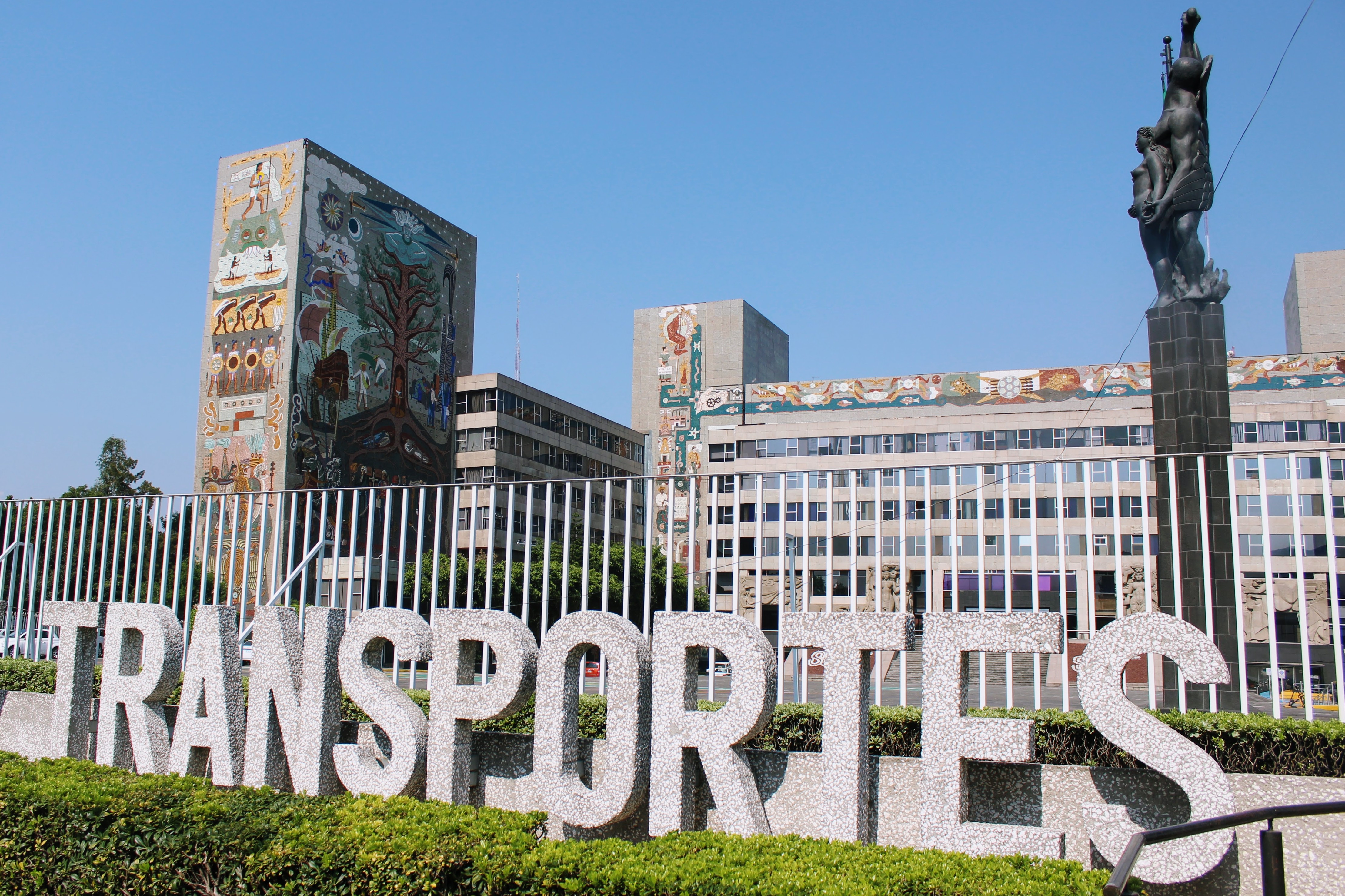
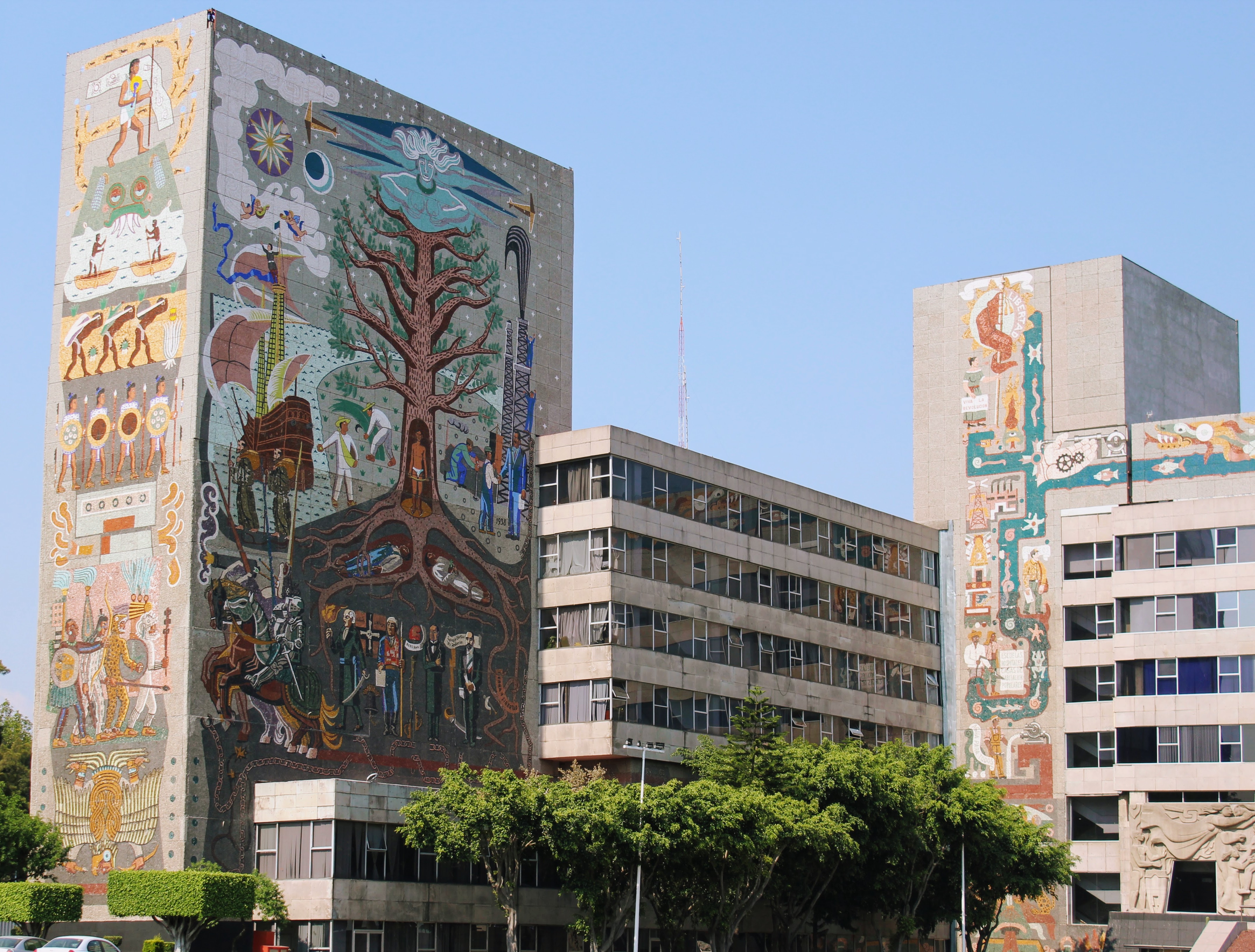

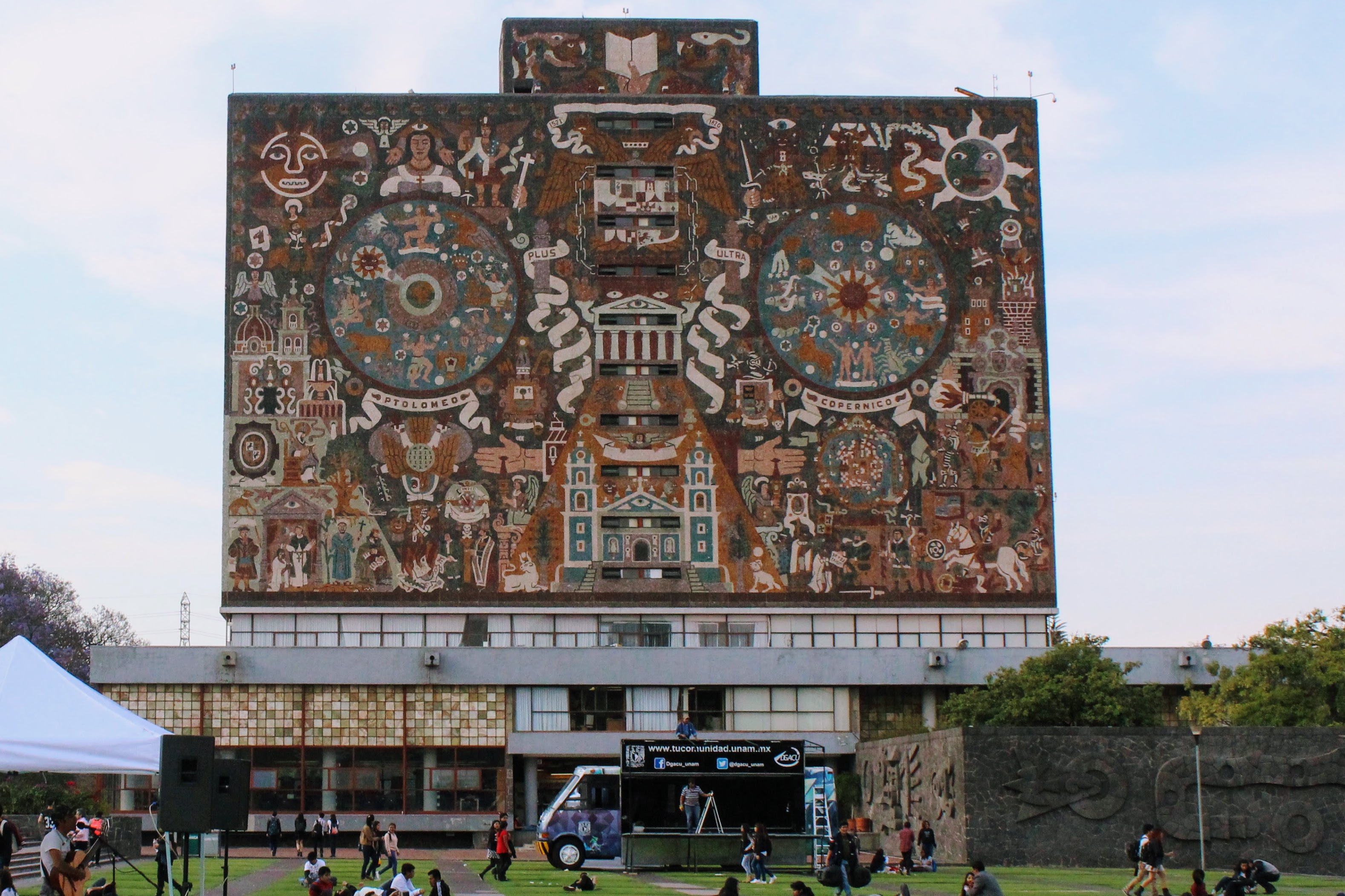
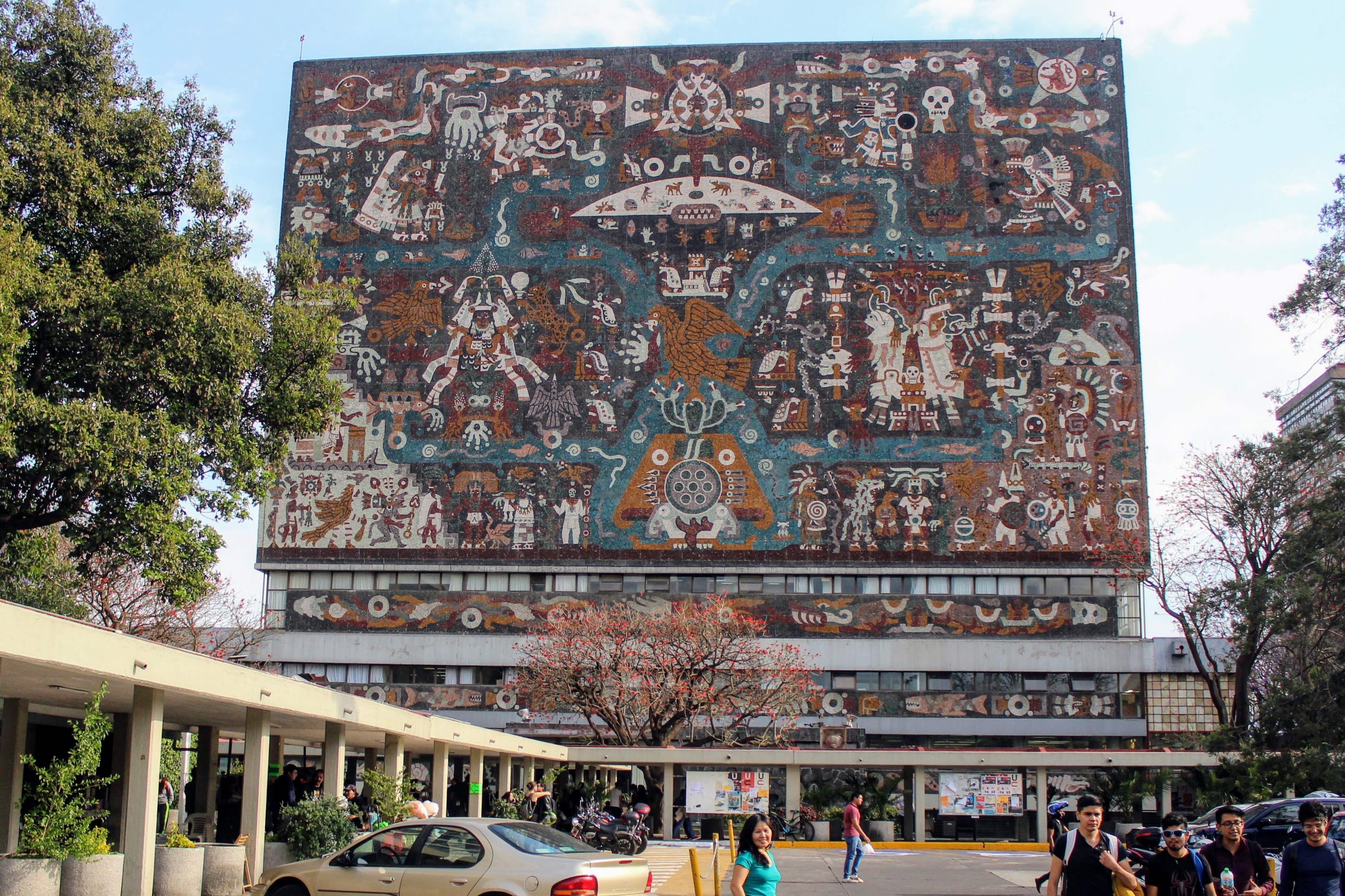
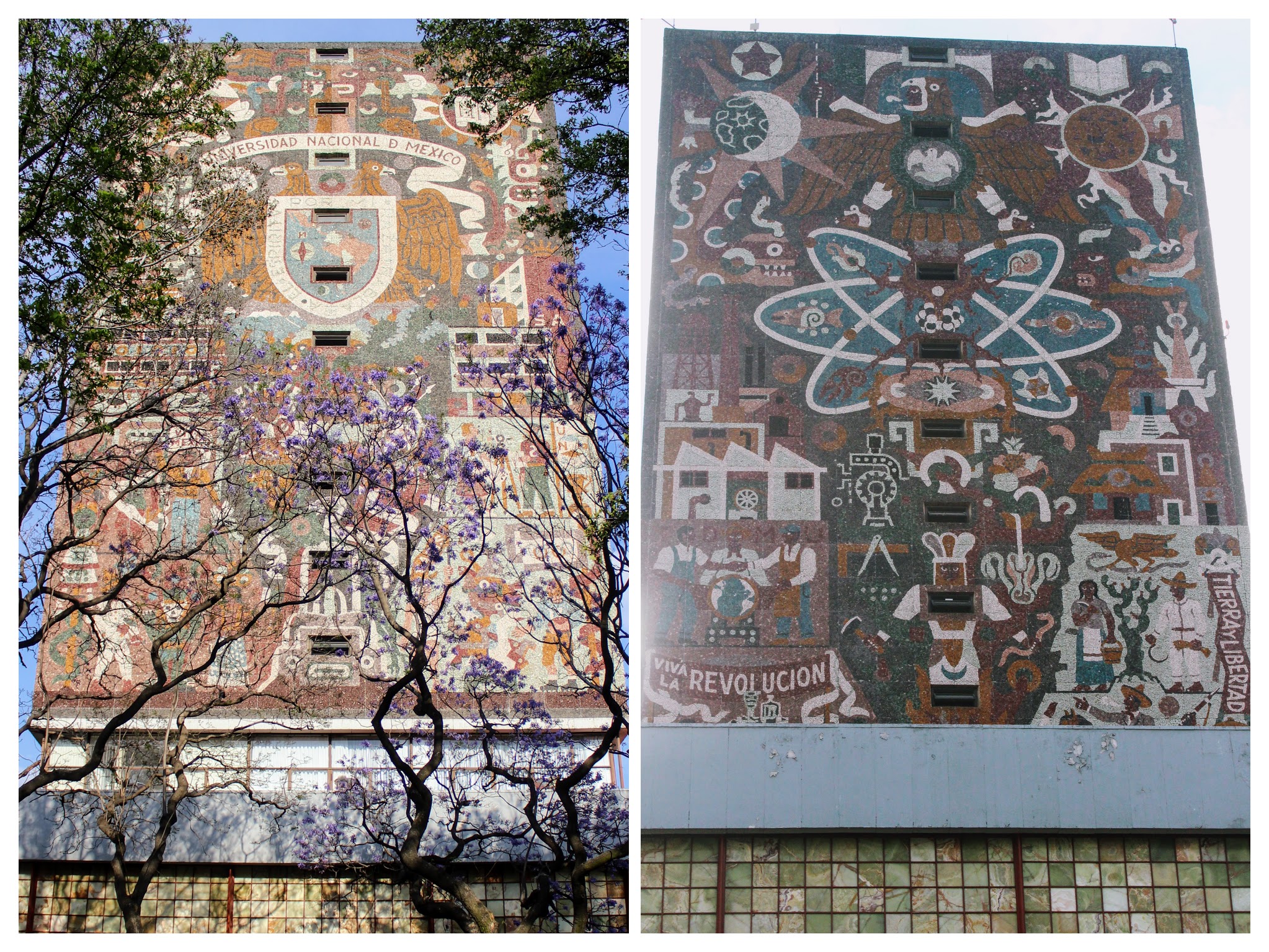

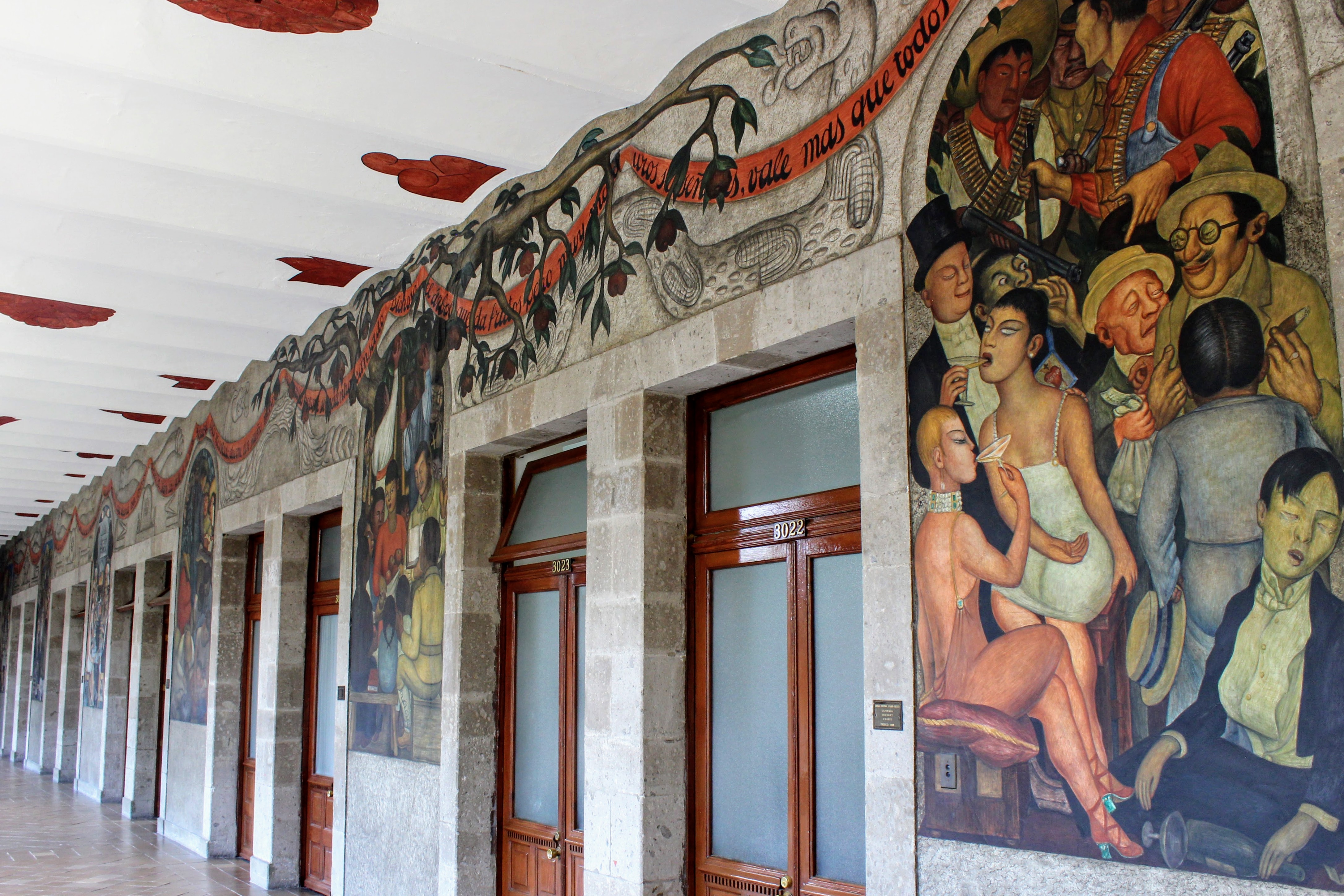
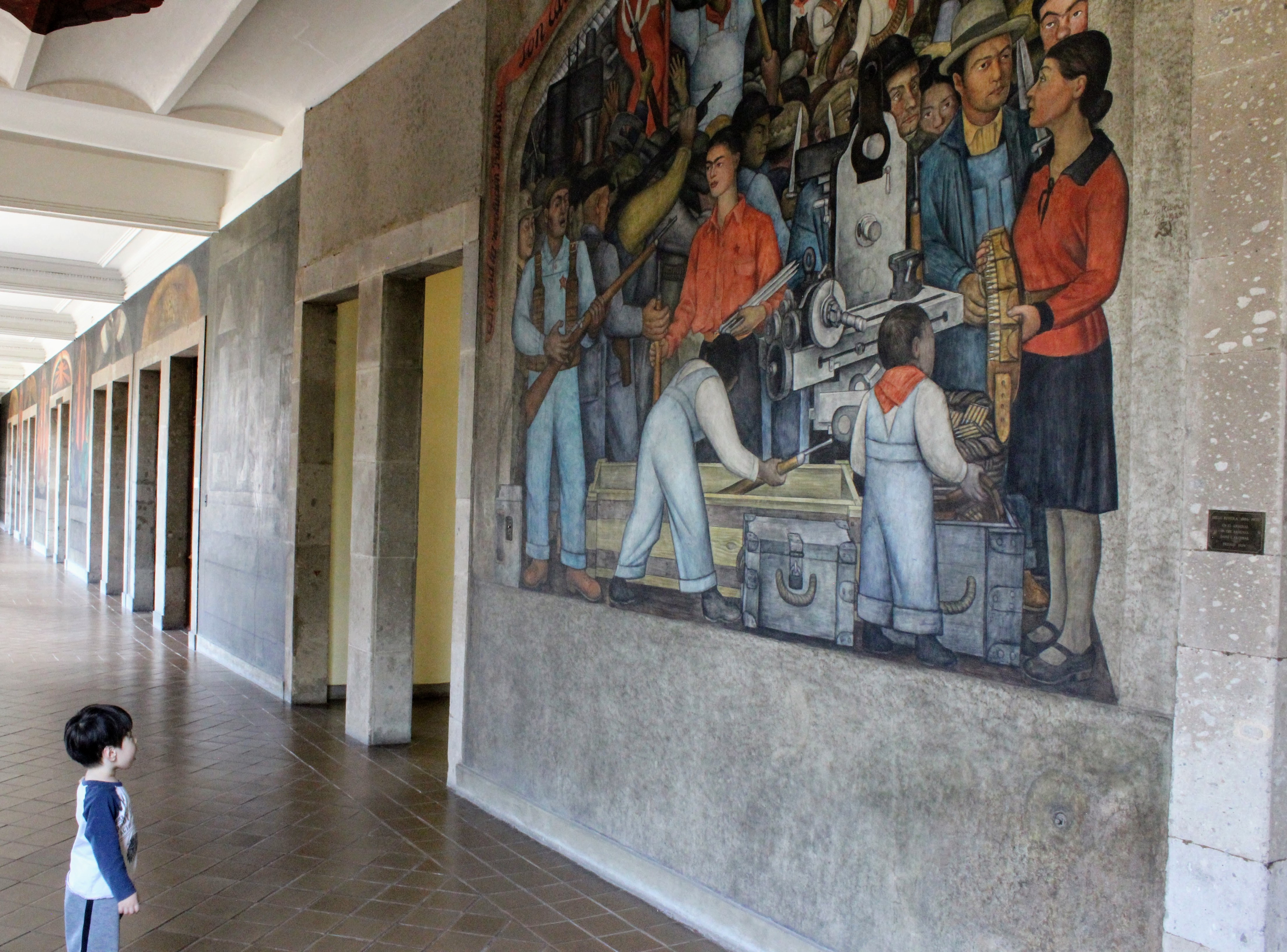
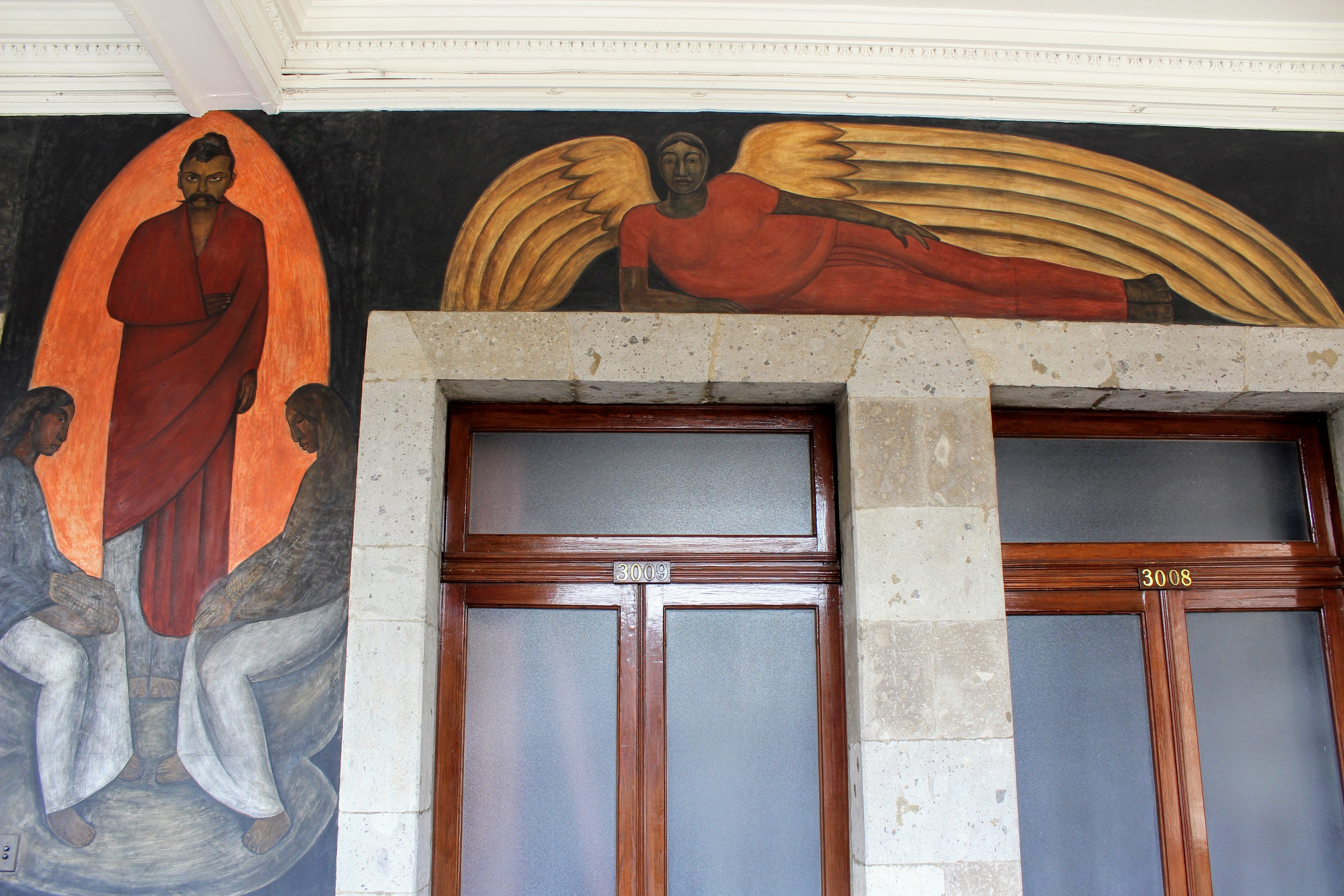
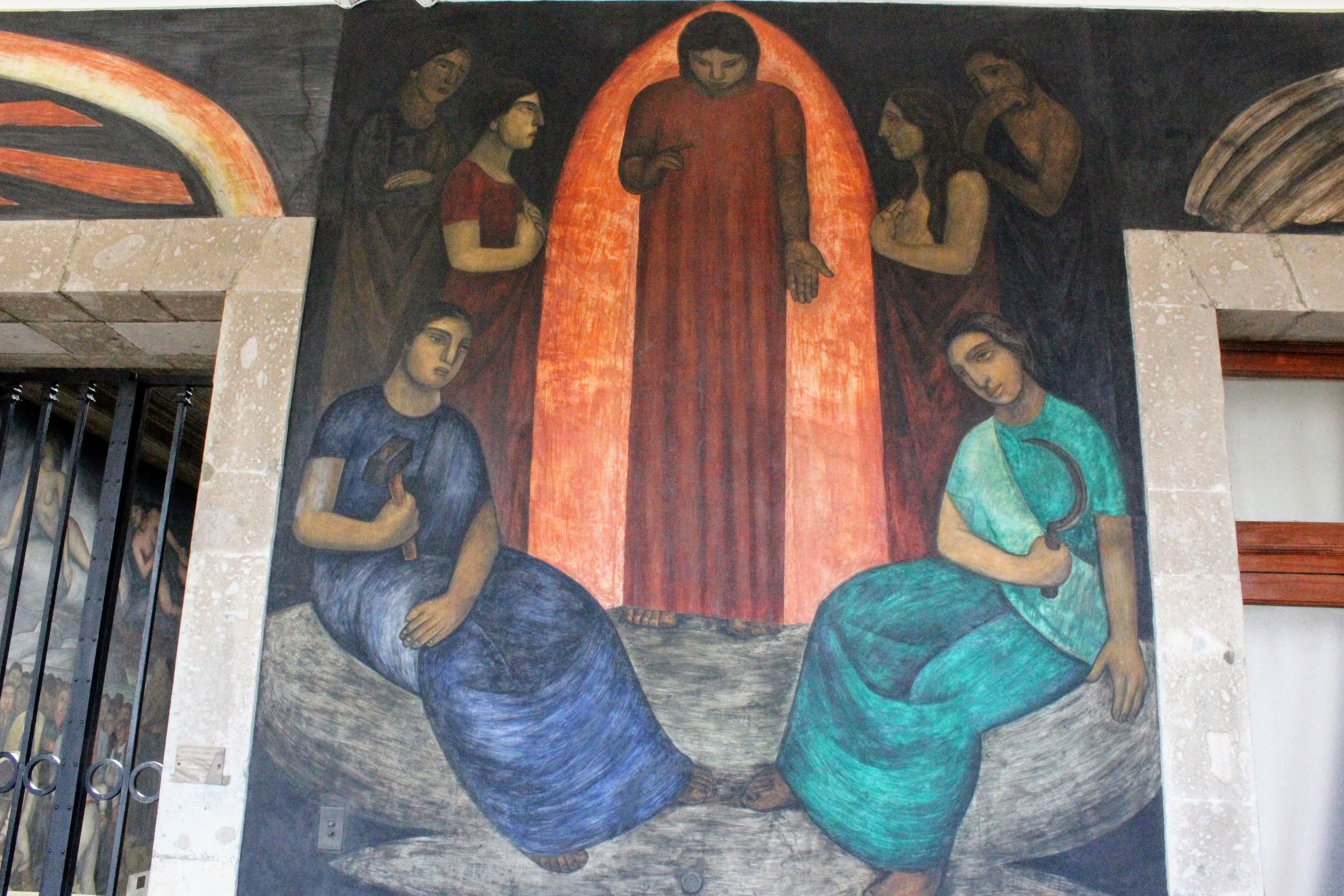
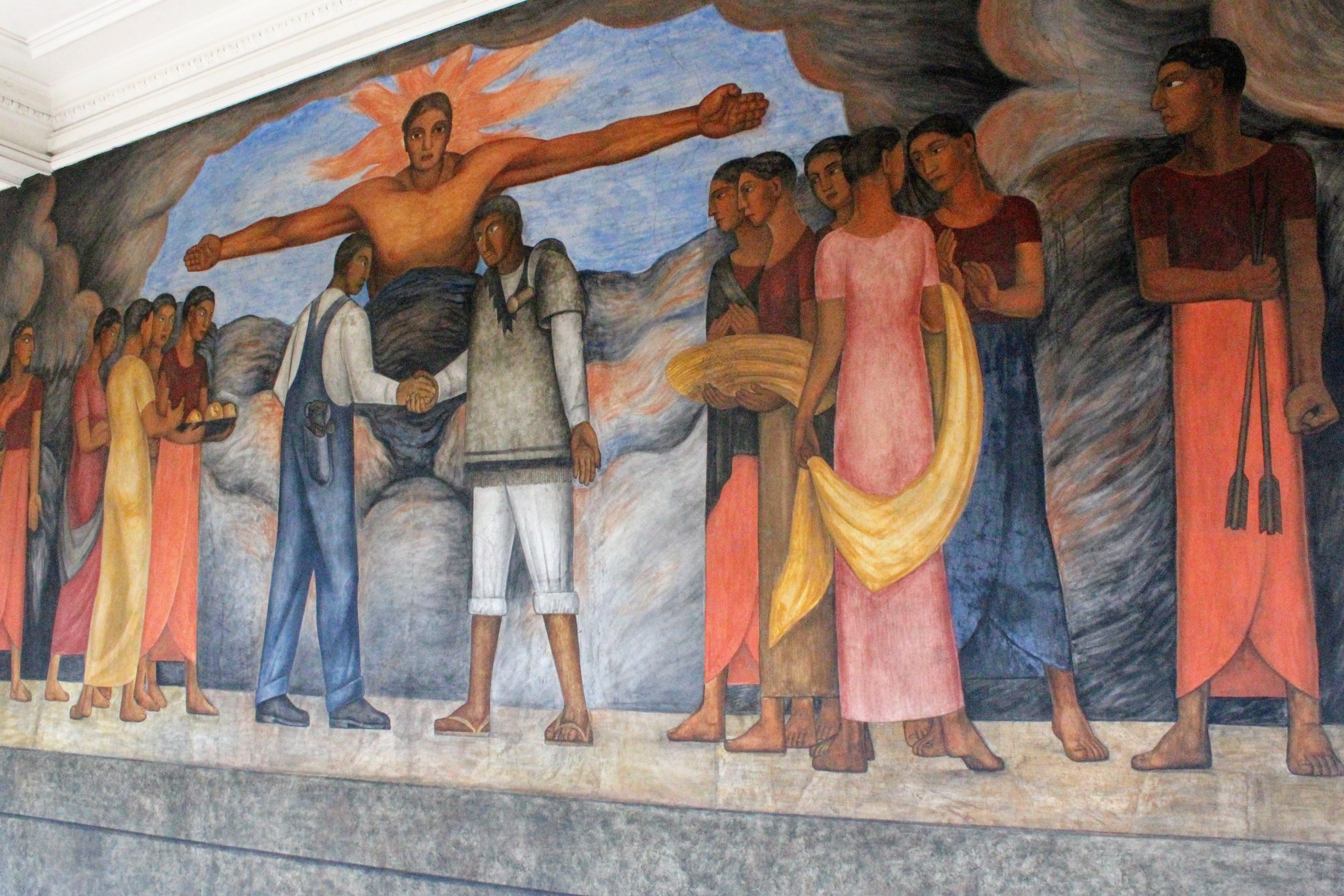



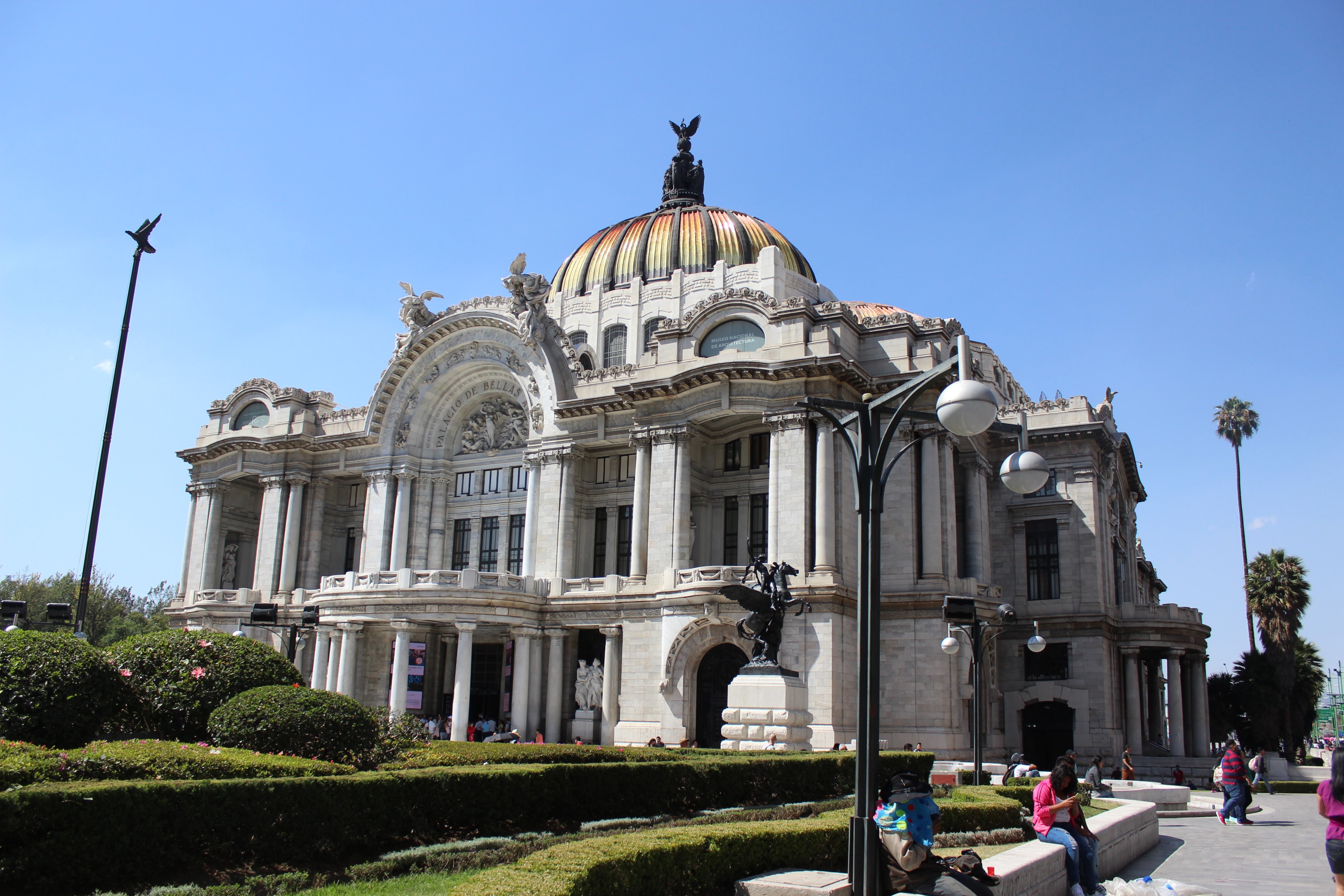
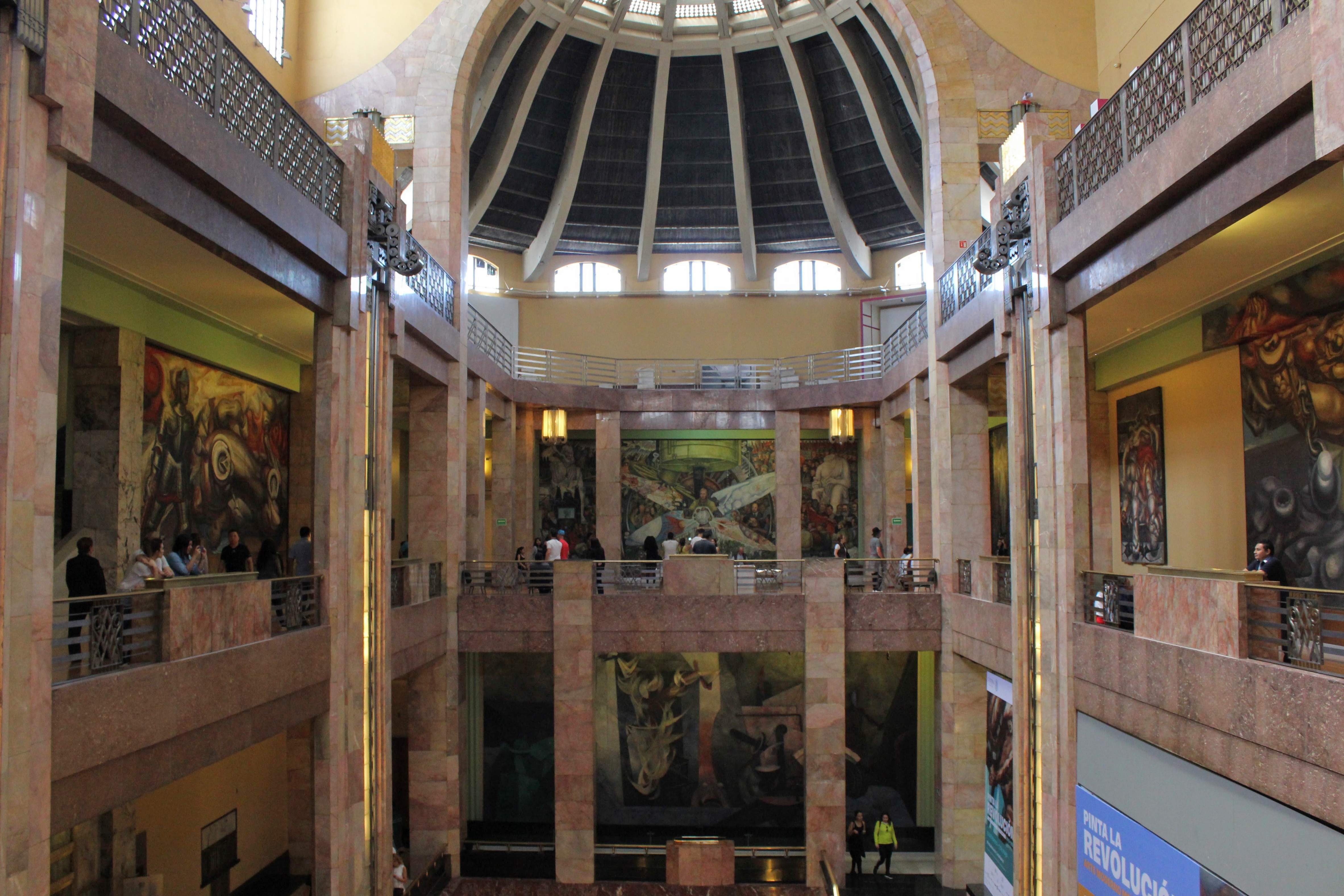

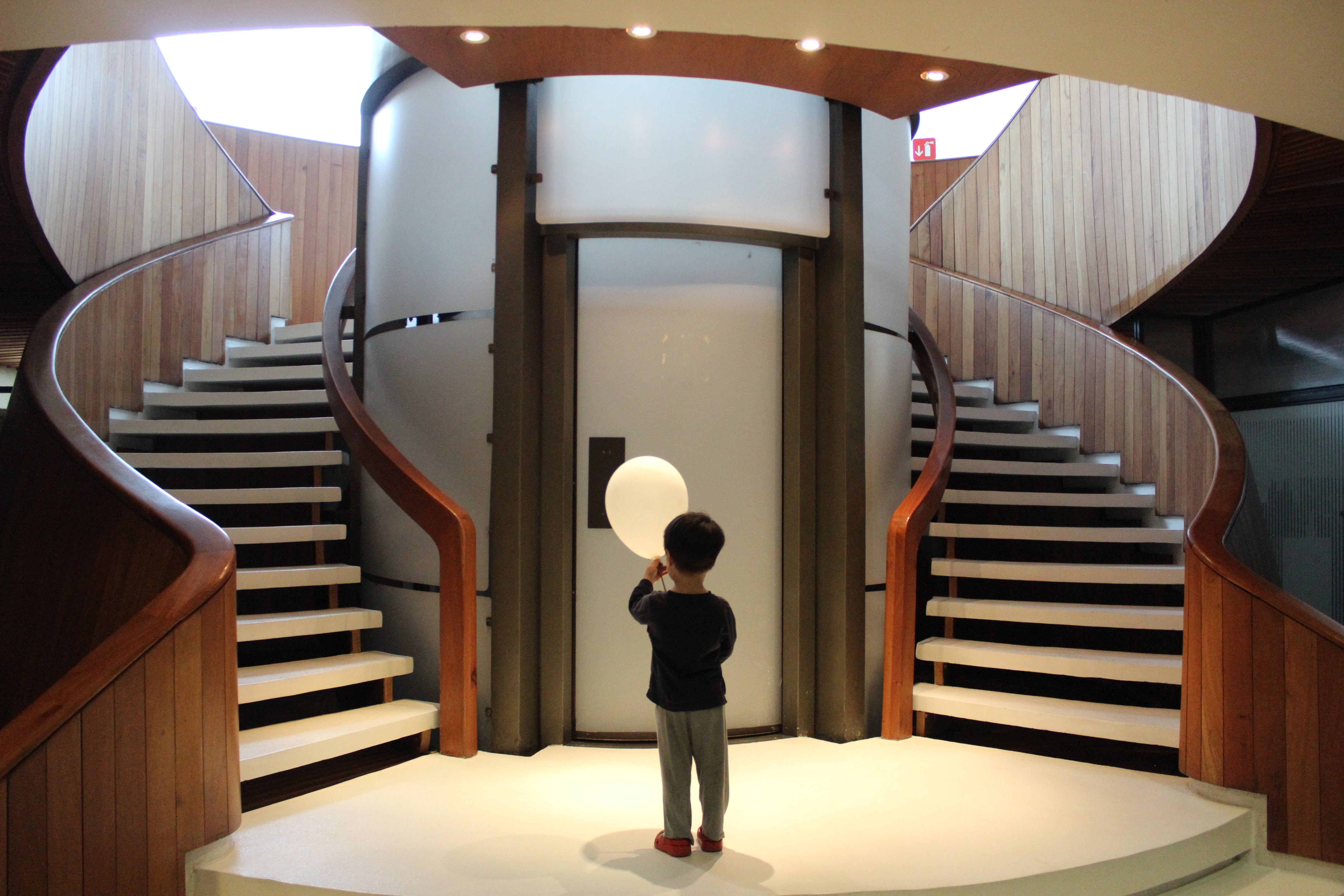



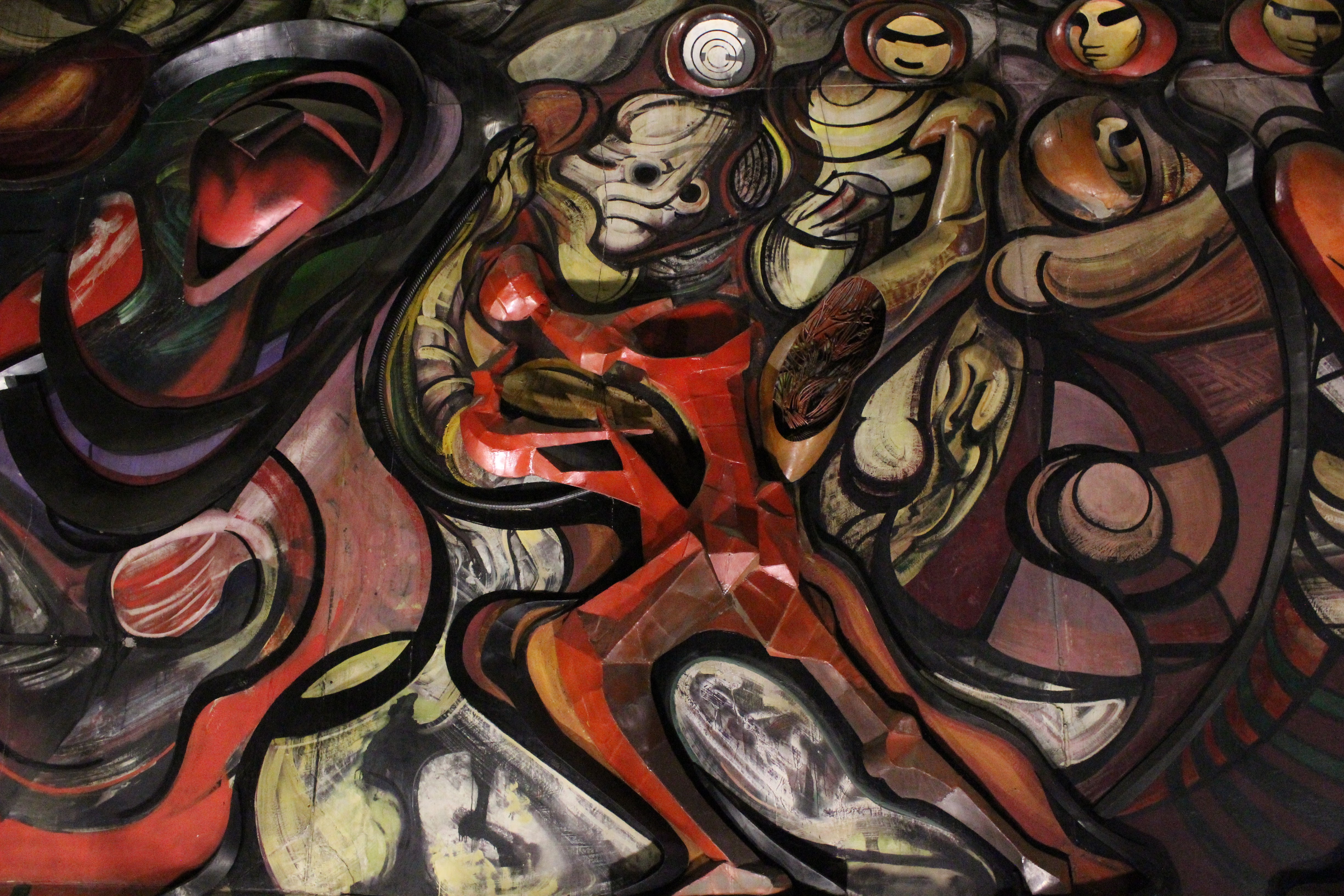
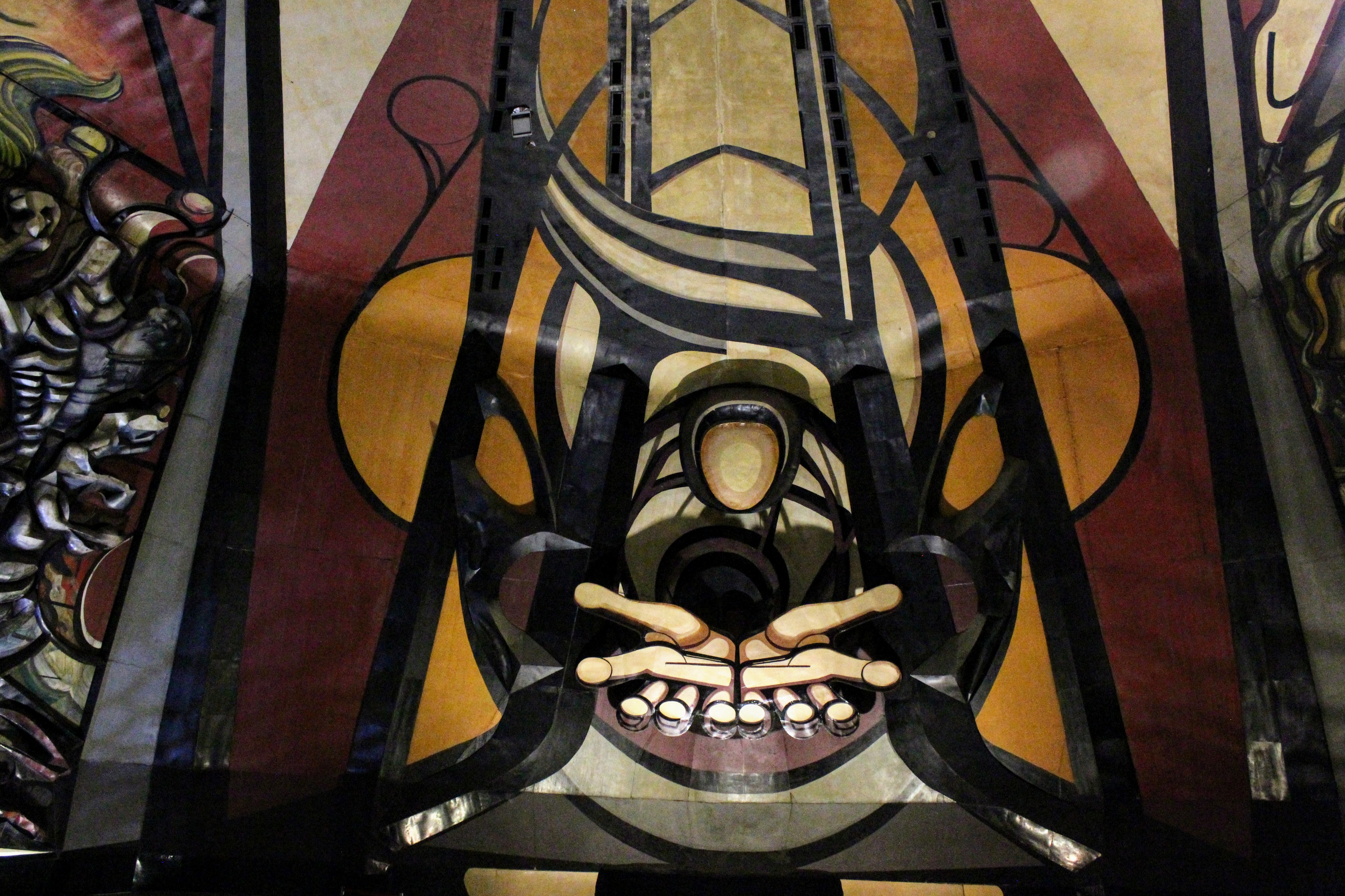
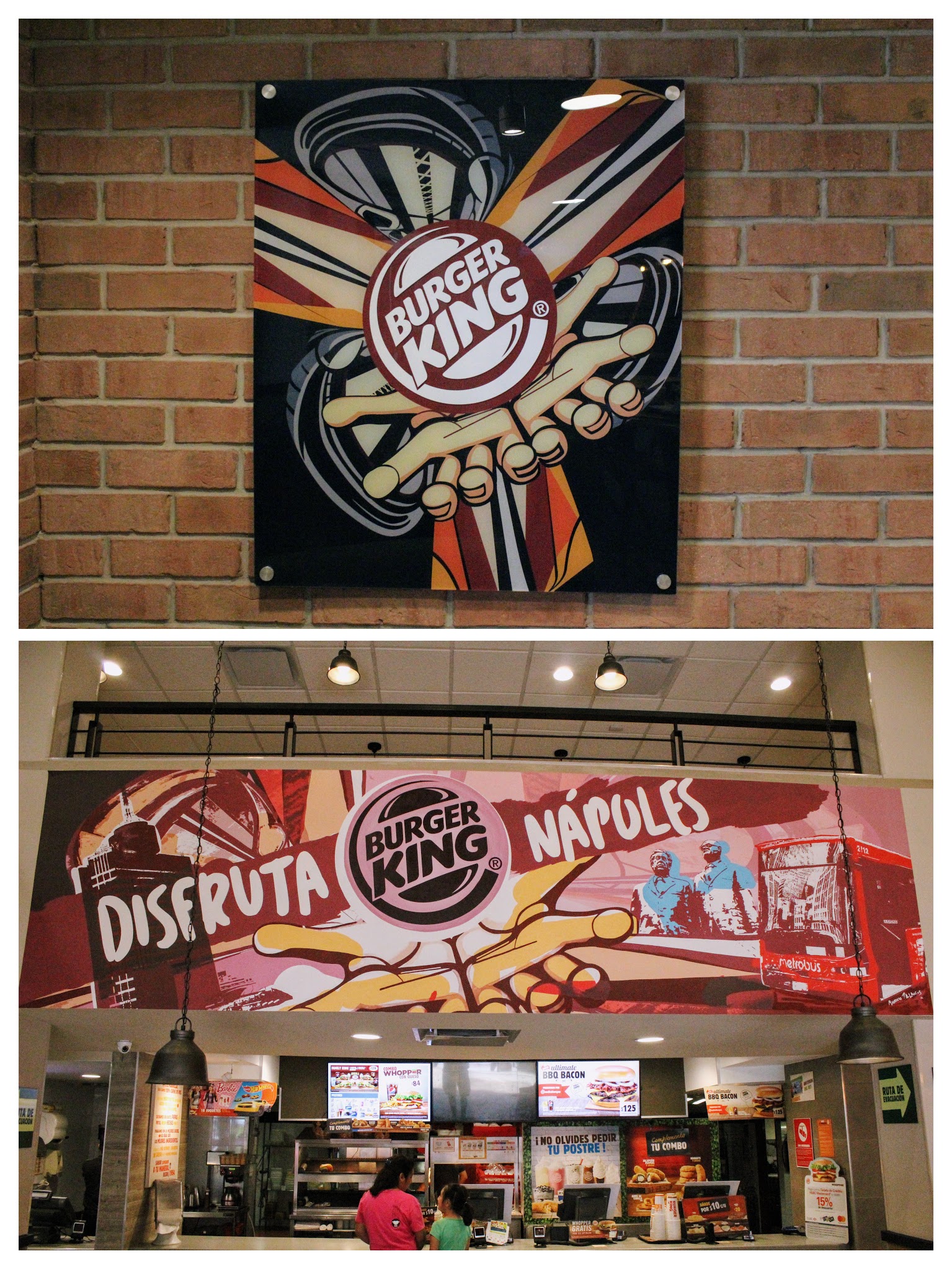

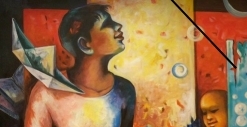
I enjoyed your post on muralism… my husband and I have visited all the ones you featured… and then some. Equally interesting are private buildings where murals transform decrepid walls into works of art. If you send me an email address, I will be pleased to send you photos of a few favourites. I see you have also visited Merida. My husband and I have lived here for 42 years… I wish I’d met you when you were here. All the best on your travels… I will follow with great interest and nostalgia (I spent 2 years in South America in the early 1970s)
Hi Joanna, thank you for the kind words!
You are right, there are many more I haven’t covered. We are planning to return to Mexico City, so hopefully will have an opportunity to see some more murals. You can send me an email to mike AT polischuk DOT com
Where do you live these days?
As I recall, the Transport & Communications Buildings Mural ( I believe it was by O’Gorman) is a mosaic and is “anacronistic” as it pictures Moctezuma holding a fish, and also the USS UTAH which was fired upon during the Intrusion of American troops in Veracruz in the early 20’s. Hard to tell what O’Gormans message was as you say it was a mix of many things.
Hi Bob,
thanks for adding these interesting details about O’Gorman’s mural, I wasn’t aware of them.
I am a Chinese, who is writing a article about the mural in Mexico.
May I use few photos from you?
Thank you!
Liqun
Hi Liqun,
You can use the photos, but you need to link to this article.
Hallo Mike,
although I am chinese born, I have a German nationality. My husband and I have been taken trips through Mexico for over twenty years now as we both are very taken by the native culture of this country and its neighbouring countries to the south. I thank you very much for letting me use some of your photos and find your article very interesting and educational. The article I write is meant for a little extanded private circle for my chinese friends and aquaintances, who have little knowledge on this part of the globe and always ask what makes that area so fascinating. So I will try to tell them in their own language. Thank you again for letting me use a few photos for this support.
Li Qun Taubert
Li Qun Taubert and her husband Dieter own a condo in Puerto Vallarta, Mexico. For the past three years I have been the victim of multiple brutal physical attacks by their tenant. I have written Li Qun Taubert and her husband over 50 emails begging them to remove this violent person from their condo. I have begged them to allow me to be safe in my home. They have refused. The District Attorney of Puerto Vallarta has formally charged their tenant with twice severely beating me. Still they refuse to allow me to be safe in my home. Although I am aware this is not the proper place to bring to light this information, I am desperate to be safe before their tenant kills me.
Hi Wendy,
Sorry to hear about your ordeal. Can you move out, to put yourself out of danger?
Hi Mike,
I did and I had tenants move in to my condo ( a retired elderly couple) so I could afford to rent another apartment. However, Li Qun’s tenant relentlessly terrorized them. They moved out and broke their lease because they were so afraid. I can not afford to leave my condo empty and rent another place to live. My attorney tells me since the safety of any new tenants can not be guaranteed then I should not rent it to anyone. I live in complete terror every single day.
These are photos of me after I was attacked and beaten by Li Qun’s tenant. (Please see link). Once again I have sent over 50 emails begging for help from Li Qun and her husband. They refuse to respond.
https://photos.app.goo.gl/kh6724NthzMEtmsH9
Wendy, so sorry to hear about your ordeal! I wish there was something I could do to help you. You have no way of leaving this place?